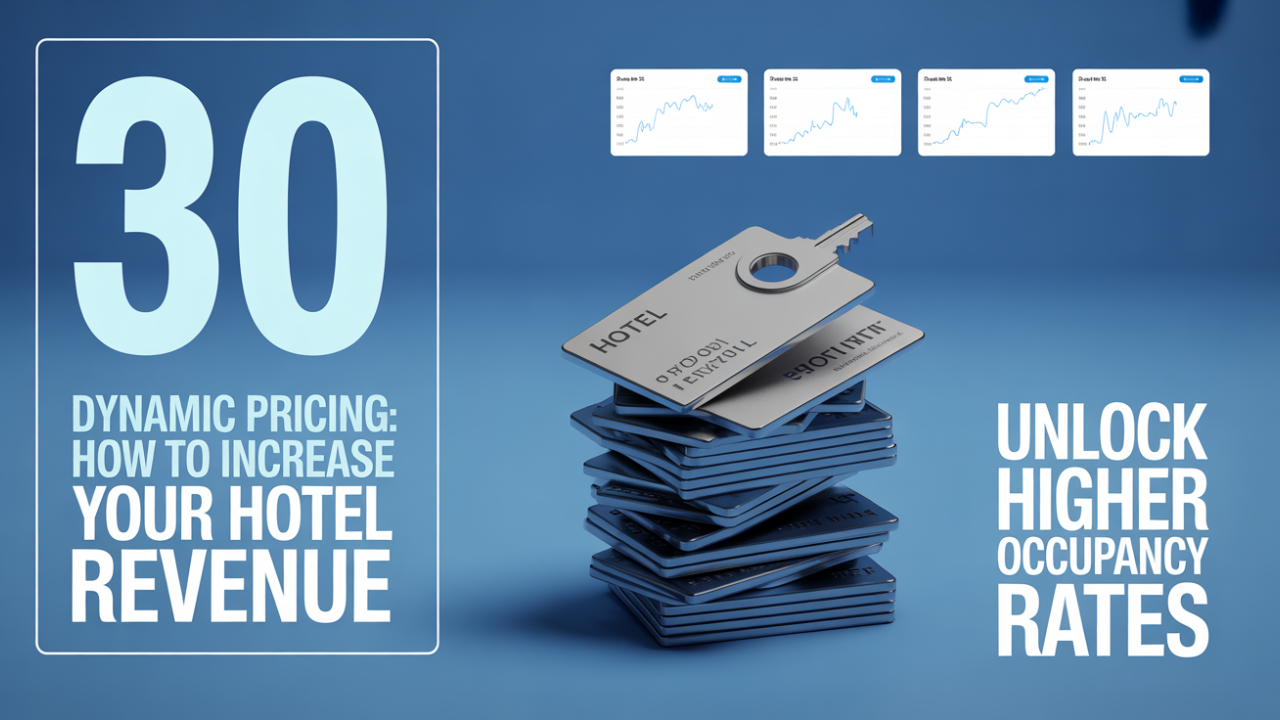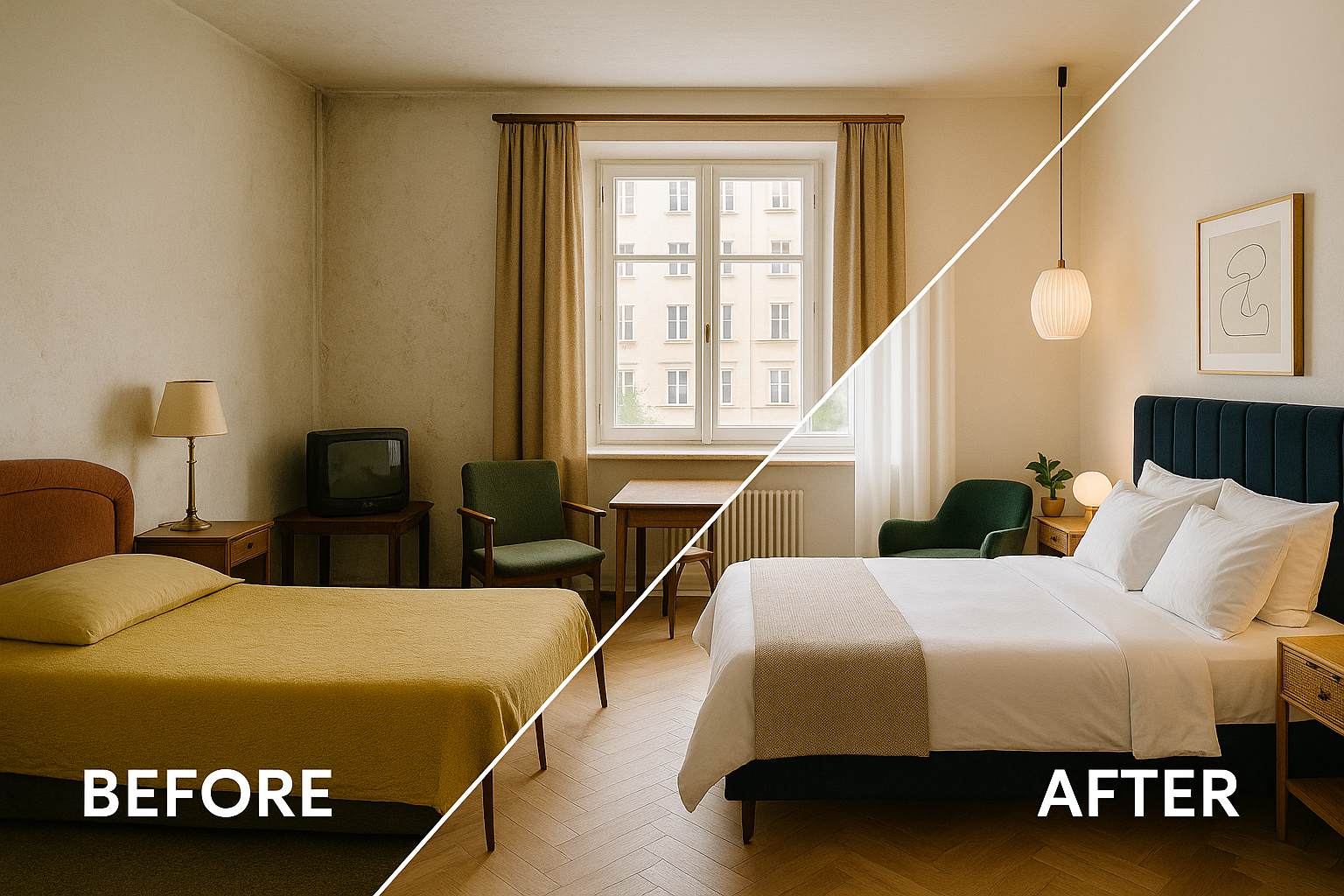Dynamic Pricing: How to Increase Your Hotel Revenue in 30 Days

Dynamic pricing is a strategy where room rates change based on real-time demand, occupancy, and market conditions. It’s the opposite of static pricing, where you set one rate and stick to it for weeks or months.
Airlines and OTAs have mastered dynamic pricing—and that’s why they outperform static hotels. The good news? You can implement dynamic pricing without an expensive RMS (Revenue Management System).
Why It’s a Game Changer for Hotels in 2025 & 2026
- Guests book earlier but cancel more often → Rates need flexibility.
- Demand spikes with events, weather, and holidays → Static pricing misses these opportunities.
- OTAs use dynamic pricing to capture guests → If you don’t, you lose.
Hotels that adopt dynamic pricing see 10–30% revenue growth within 1–2 months, even without increasing costs.
How to Implement Dynamic Pricing in 30 Days
Here’s the step-by-step roadmap you can follow:
✅ Step 1: Understand Your Demand Pattern
Analyze:
- Business-on-the-Books (BOB): What’s your current pickup for the next 90 days?
- High-demand triggers: Events, festivals, holidays, weddings.
- Low-demand gaps: Days where occupancy is below 40%.
💡 Example:
- Friday-Saturday is always strong → Increase rates and apply 2-night minimum stay.
- Midweek is weak → Create weekday deals or include perks (free dinner, parking).
✅ Step 2: Set Your Pricing Tiers
Instead of one rate, create dynamic price levels based on occupancy.
Example:
- Base rate: €120 (0–40% occupancy)
- Tier 1: €130 (41–60%)
- Tier 2: €145 (61–80%)
- Tier 3: €160 (81–100%)
💡 Why this works:
If you sell the last 5 rooms at €160 instead of €120, that’s €200 more per night—without extra cost.
✅ Step 3: Track Competitors
You don’t need a full RMS—start simple:
- Check competitor rates on OTAs daily (especially for weekends and event dates).
- If they’re nearly sold out → Raise your rates.
- If demand is soft → Add value (breakfast, parking) instead of dropping price immediately.
✅ Step 4: Apply Length of Stay (LOS) Restrictions
Example:
- High-demand weekends: 2-night minimum stay.
- Special events: 3-night minimum with package offers.
Why? It prevents losing peak nights to single-night stays.
✅ Step 5: Monitor and Adjust Daily
Dynamic pricing isn’t set-and-forget. Check:
- Daily pickup
- Competitor moves
- Event impact
Even small daily tweaks can add €1,000+ extra revenue in a month for a 30-room hotel.
Advanced Tips to Maximize Dynamic Pricing
✔ Use psychological pricing: €149 looks better than €150.
✔ Add fences: Make higher rates more appealing by including perks.
✔ Promote upsells: When guests see price gaps, they often upgrade.
Real Example: 30-Day Revenue Boost
One of my clients, a 20-room boutique hotel, implemented simple dynamic pricing:
- Increased rates by €15–€20 on high-demand dates.
- Added 2-night minimum during a local event.
- Used a price matrix with 3 tiers.
Result:
Revenue increased by 18% in 30 days, with no additional marketing spend.
Common Mistakes to Avoid
❌ Raising rates too late → If you wait until you’re almost full, you’ve already lost potential revenue.
❌ Price drops without strategy → It kills your brand positioning and doesn’t always bring more bookings.
❌ Ignoring seasonality → Your base rate in low season should differ from high season.
What If You Don’t Have an RMS?
No problem.
✔ Use your PMS reports, Excel sheets, and free OTA insights.
✔ Review rates at least once a day during high season.
✔ Start with manual adjustments—then consider affordable RMS later.
Why Dynamic Pricing Is the Fastest Revenue Win
- No capex, no major investment.
- Works even for 10-room B&Bs or 200-room hotels.
- You see results in weeks, not months.
✅ Want My Dynamic Pricing Templates?
✔ Occupancy-based pricing matrix
✔ 30-day revenue boost checklist
✔ Demand calendar with emoji system
👉 Join my Inevitable Hotel Success Program or request a Direct Booking & Pricing Audit today.And don’t forget to join our free resource library for more practical tips and trainings to help you boost direct bookings or check out my Youtube Channel.








